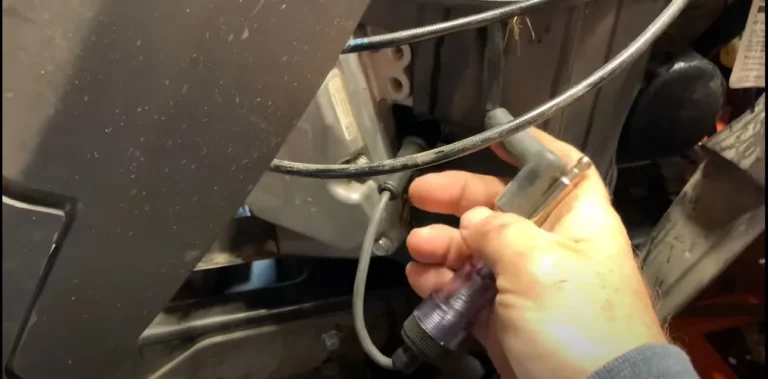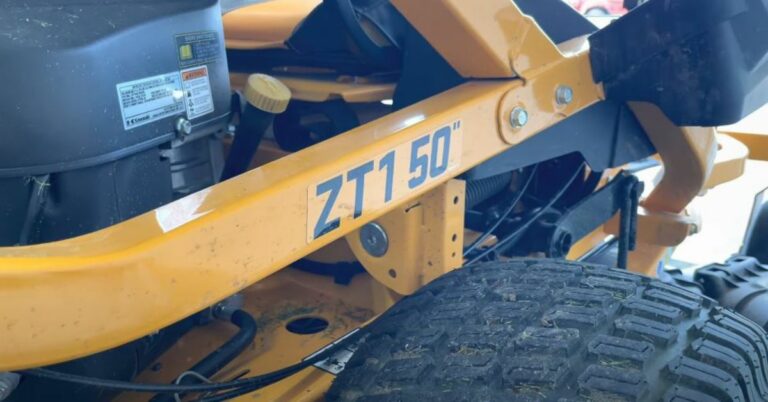Bad Lawn Mower Fuel Filter Symptoms (6 Problems) Solved
Do you think your lawn mower’s fuel filter might not be up to the mark and isn’t working as it should? You can always look for the symptoms and see if there’s something to be concerned about.
Understanding the symptoms of a faulty fuel filter is essential for proper maintenance and ensuring your mower operates smoothly.
A bad fuel filter in a lawn mower can lead to engine stalling, difficulty starting, loss of power, poor fuel efficiency, engine misfires, fuel contamination, leaks, and overheating.
In this comprehensive guide, I’ll walk you through the common signs of a bad fuel filter, explore the underlying problems it can cause, and provide effective solutions to tackle these issues.
So, without further ado, let’s dive in and discover the signs of a faulty fuel filter.
6 Symptoms Of Bad Lawn Mower Fuel Filter With Solutions
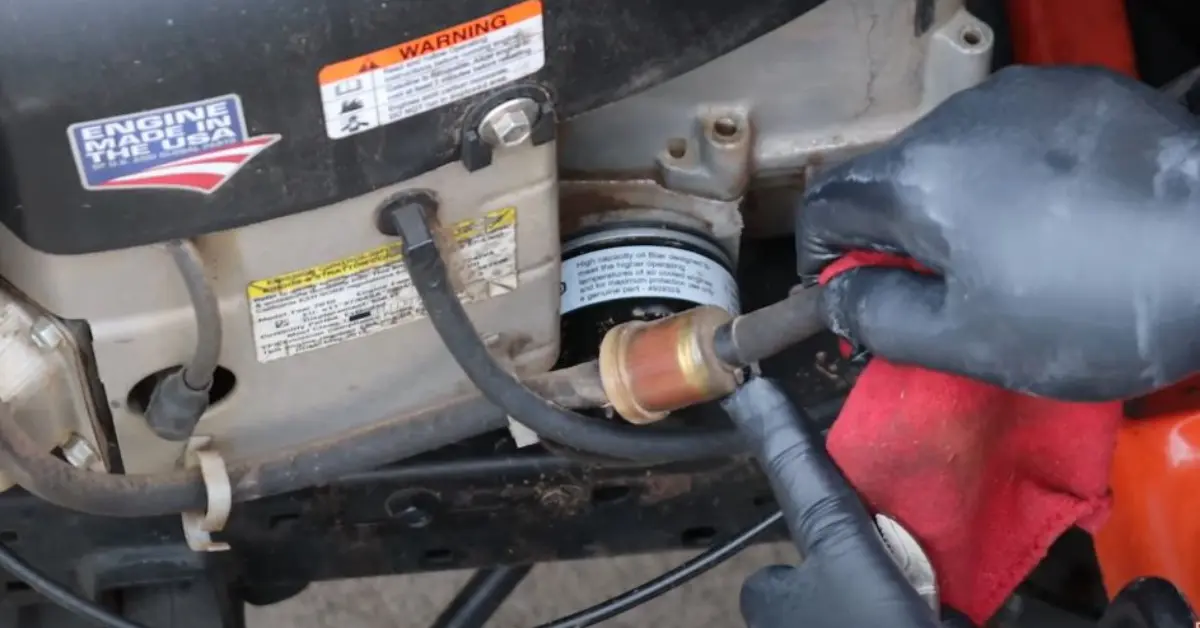
1. Engine Misfires and Stalling
One of the common symptoms of a bad lawn mower fuel filter is engine misfires and stalling (stopping in the process). When the fuel filter becomes clogged or dirty, it restricts the fuel flow to the engine, causing it to receive insufficient fuel for combustion.
As a result, the engine may misfire, causing irregular or uneven operation, and may completely.
Solution
1. Inspect the fuel filter
Locate the fuel filter, typically along the fuel line between the fuel tank and the carburetor. Check for any signs of clogging or dirt settings.
2. Clean the fuel filter
If the fuel filter appears dirty but is not severely blocked, you can try cleaning it.
Remove and gently rinse the filter with a suitable cleaning solution or solvent. Do make sure it is completely dry before you put it back in.
3. Replace the fuel filter
If cleaning the fuel filter doesn’t resolve the issue or if the filter is severely clogged or damaged, replacing it with a new one would be the only option.
Refer to your lawn mower’s manual for the specific filter replacement procedure and recommended filter part number.
4. Maintain regular filter replacement
To prevent engine misfires and stalling caused by a clogged fuel filter, it’s crucial to maintain a regular filter replacement schedule.
Consider replacing the fuel filter at least once a year or following the manufacturer’s recommended intervals.
5. Check for other fuel system issues
If the problem persists after cleaning or replacing the fuel filter, there may be additional fuel system issues.
Inspect the carburetor, fuel lines, and other components for blockages, leaks, or malfunctions. Seek professional assistance if needed.
2. Difficulty Starting the Engine
A good fuel filter can prevent problems starting your lawn mower’s engine.
When the fuel filter becomes clogged, it restricts fuel flow to the engine. As a result, the engine may need more fuel or take longer than usual to start.
Symptoms
- The engine cranks but doesn’t start.
- The engine takes longer than usual to start.
- The engine starts but stalls shortly after.
Solution
- First, check the fuel tank to ensure it has enough fuel.
- Next, inspect the fuel filter for any signs of damage or clogging. If the filter is clogged or damaged, replace it with a new one.
- Also, check the fuel lines for any blockages or leaks.
- Start the engine to help draw fuel from the tank.
Prevention
- Use clean and high-quality fuel to minimize the risk of clogging the filter.
- Always store the lawn mower with a full fuel tank to prevent debris and moisture from entering the fuel system.
3. Loss of Power and Performance
A bad lawn mower fuel filter can lead to a loss of power and decreased performance.
When the fuel filter is clogged or dirty, it restricts fuel flow to the engine, resulting in insufficient fuel reaching the combustion chamber.
This can cause a significant drop in power and the overall performance of the mower.
Also Read: Symptoms of a Bad Voltage Regulator on a Lawn Mower
Symptoms
- The mower struggles to cut through the grass and may leave uneven patches.
- The mower takes longer to reach the desired speed or needs more responsiveness.
- The mower may not operate as efficiently as before, leading to a slower mowing speed or difficulty tackling tougher terrain.
Solution
- Inspect the fuel filter for signs of clogging or dirt accumulation. If it appears dirty, it’s time to clean or replace it.
- Remove the filter and clean it using a suitable cleaning solution or solvent. Ensure it is completely dry before reinstalling.
- If cleaning doesn’t improve the situation or the filter is severely clogged or damaged, replace it with a new one.
- Consult the manufacturer’s manual for the correct replacement filter and installation instructions.
- Establish a regular maintenance schedule that includes replacing the fuel filter according to the manufacturer’s recommendations to prevent power loss and maintain optimal performance.
Additionally, ensure you are using high-quality fuel that is free from contaminants. Regularly inspect the fuel lines and other fuel system components for any signs of blockages or leaks.
4. Sputtering and Hesitation
A bad fuel filter in a lawn mower can result in sputtering and stalling during operation.
When the filter is clogged or restricted, it affects the fuel flow to the engine, leading to fuel delivery and ignition inconsistencies. This can cause the mower to crash, stall, or hesitate during operation.
Also Read: How to Fix Lawn Mower Sputtering? (Reasons And Solutions)
Symptoms
- Sputtering or coughing sounds: The engine may produce irregular sputtering or coughing sounds while running.
- Hesitation during acceleration: When you try to increase the speed or throttle up, the mower may hesitate or struggle to respond.
- Stalling or intermittent operation: The engine may stall unexpectedly or exhibit intermittent operation, running smoothly and then sputtering or hesitating at others.
Solution
- Begin by inspecting the fuel filter for signs of clogging, such as dirt, debris, or mineral buildup. It needs to be cleaned or replaced if it appears dirty or clogged.
- Depending on the filter type, you can clean it by rinsing it with a suitable cleaning solution or blowing compressed air through it.
- Ensure the filter is completely dry before reinstalling.
5. Fuel Leakage
A bad lawn mower fuel filter can also contribute to fuel leakage, a severe problem that needs immediate attention.
A damaged or faulty fuel filter can cause fuel to leak from the mower, posing safety hazards and potentially damaging the engine.
Symptoms
- You may notice fuel dripping or pooling around the fuel filter, fuel lines, or other fuel system components.
- A persistent gasoline smell near the mower, especially when running or recently turned off, indicates a potential fuel leakage issue.
- If your mower requires more frequent refueling or the fuel gauge shows a rapid decline in fuel levels, it could be due to fuel leakage.
Solution
- Inspect the fuel filter, fuel lines, and connections for any signs of damage, cracks, or loose fittings. Ensure that all components are tightly secured.
- If you identify any damaged or worn-out fuel systems components, such as the fuel filter, fuel lines, or fuel tank, replace them immediately.
- Consult the manufacturer’s manual or seek professional assistance if needed.
- When replacing parts, ensure they are installed correctly, following the manufacturer’s instructions and specifications.
- Implement a regular maintenance routine that includes inspecting the fuel system for leaks and addressing any issues promptly.
It’s crucial to address fuel leakage promptly to prevent safety risks and further damage to your mower.
6. Engine Overheating
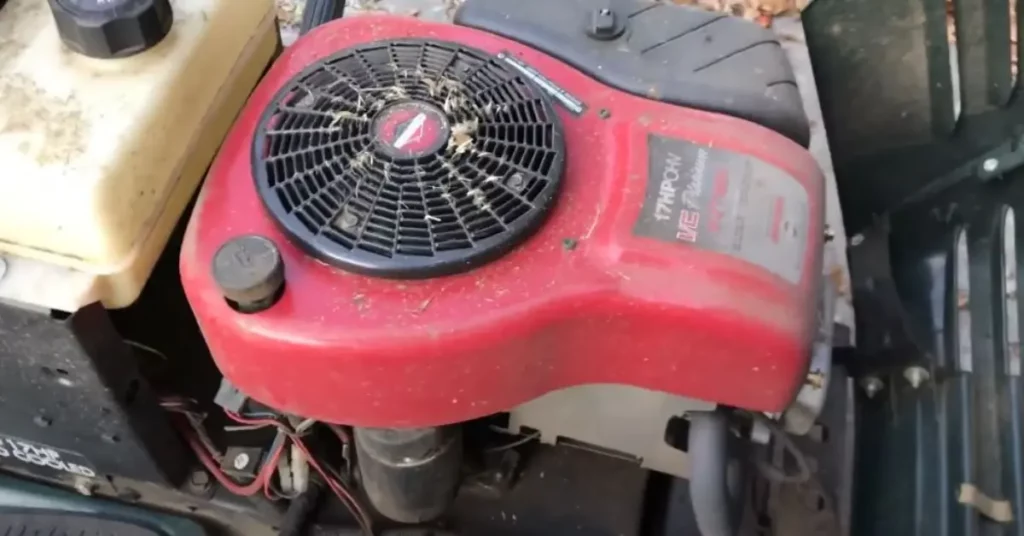
A bad fuel filter can contribute to engine overheating, which can cause significant damage if not addressed promptly.
When the fuel filter is clogged or restricted, it obstructs the fuel flow to the engine, leading to poor combustion and increased heat buildup.
Symptoms
- You may feel excessive heat radiating from the engine, indicating it’s running hotter than normal.
- Overheating can cause the engine to stall or shut off unexpectedly, as the increased heat disrupts proper functioning.
- The mower may experience a decrease in power and overall performance due to the engine struggling to operate at high temperatures.
Solution
- Inspect the fuel filter for any signs of clogging or blockage. It needs to be cleaned or replaced if it appears dirty or clogged.
- Depending on the filter type, you can clean it by rinsing it with a suitable cleaning solution or blowing compressed air through it.
- Ensure the filter is completely dry before reinstalling it.
- If cleaning doesn’t resolve the issue or the filter is severely clogged, replacing it with a new one is advisable.
- Refer to the manufacturer’s manual for the correct replacement filter and installation instructions.
- Ensure the engine and surrounding areas have adequate airflow by removing debris, grass clippings, or obstructions that might impede cooling.
- Implement a regular maintenance schedule that includes inspecting and cleaning or replacing the fuel filter as the manufacturer recommends.
Also Read: 4 Common Lawn Mower Clutch Problems (Fixed)
Importance of Regular Fuel Filter Maintenance of a Lawn Mower
While I have discussed various symptoms and problems associated with a bad fuel filter, it’s important to highlight the significance of regular fuel filter maintenance to prevent these issues from arising in the first place.
1. Ensures Efficient Fuel Flow
A clean and unclogged fuel filter allows for smooth and uninterrupted fuel flow to the engine, ensuring optimal combustion and performance.
Regular maintenance helps prevent blockages and provides a continuous supply of clean fuel.
2. Protects the Engine
The fuel filter safeguards your mower’s engine by filtering out contaminants and debris present in the fuel. Over time, these particles can accumulate and clog the filter, leading to engine damage.
3. Preserves Fuel System Components
By removing impurities from the fuel, the filter protects other critical components of the fuel system, such as fuel injectors and carburetors, from potential damage.
This helps to maintain their efficiency and functionality over time.
Regularly cleaning or replacing the fuel filter is a small investment compared to the potentially costly repairs that may arise from a poorly maintained filter.
4. Prevents Costly Repairs
Regularly cleaning or replacing the fuel filter is a small investment compared to the potentially costly repairs that may arise from a poorly maintained filter.
Frequently Asked Questions (FAQs)
How often should I replace the fuel filter in my lawn mower?
There isn’t a specific period after which you should consider changing your fuel filter.
Usually, you look for symptoms that may be visible, indicating that the fuel filter isn’t working as intended. You can then change it or clean it, whichever suits you.
Can I clean the fuel filter instead of replacing it?
While some fuel filters can be cleaned, replacing the filter rather than cleaning it is generally recommended.
Cleaning may not completely remove all contaminants, and a new filter ensures optimal filtration. Additionally, many fuel filters are cheap, making replacement more convenient and reliable.
How can I tell if my fuel filter needs maintenance or replacement?
Several signs indicate a potential issue with the fuel filter. These include engine misfires, difficulty starting the engine, loss of power and performance, sputtering, hesitation, fuel leakage, engine overheating, or visible debris in the fuel.
If you experience these symptoms, checking and replacing the fuel filter’s a good idea.
Conclusion
Regular fuel filter maintenance is key to running your lawn mower smoothly and efficiently.
Understanding the symptoms of a bad fuel filter and addressing them can prevent problems and ensure the long life of your mower’s engine and fuel system.
Regularly inspecting, cleaning, or replacing the fuel filter, as the manufacturer recommends, will save you from costly repairs, optimize fuel flow, protect engine components, and promote fuel efficiency.

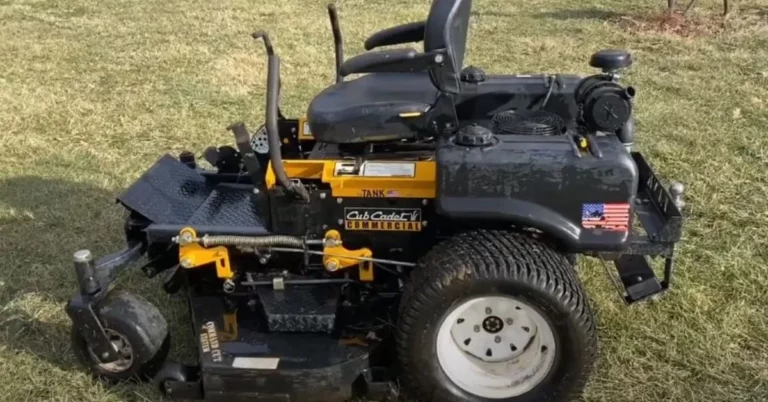
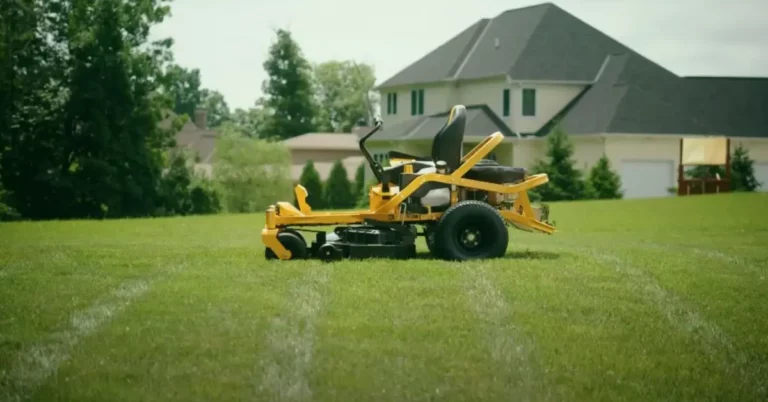
![7 Common Simplicity Zero Turn Mower Problems [Fixed]](https://yardcurator.com/wp-content/uploads/2023/06/10-Common-Simplicity-Zero-Turn-Mower-Electrical-Problems-768x402.webp)

